No Bears, But A Few Birds And Cool Clouds On The Greater Hazleton Rails To Trails.
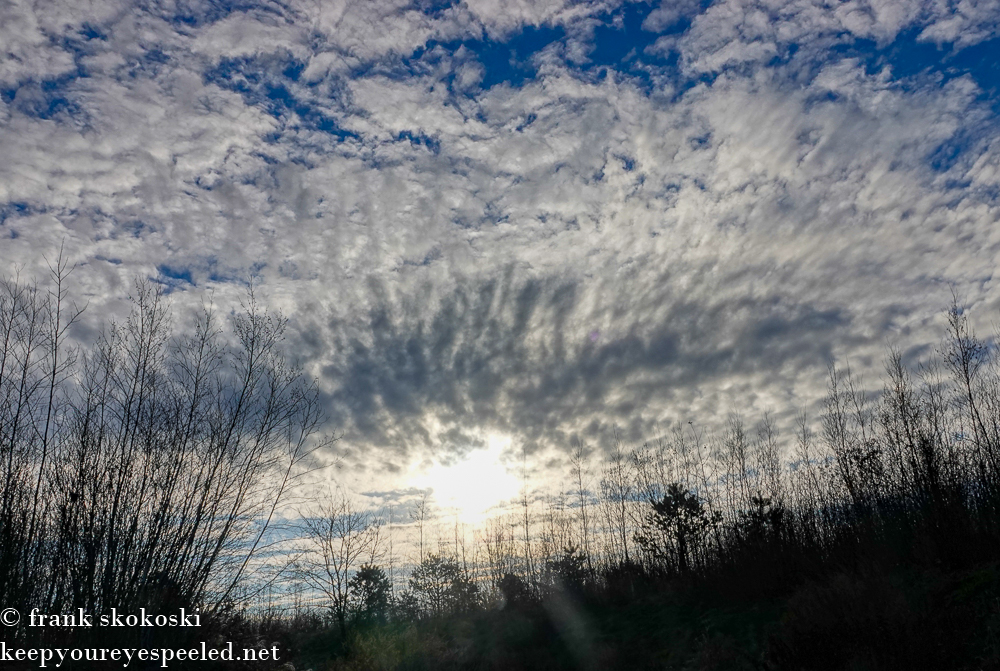
Last Sunday I decided to stay close to home and hike on the Greater Hazleton Rails to Trails in Luzerne County. Once again I began my hike on the eastern access to the trail located near the village of Hazle Brook. I saw a bear here a couple of weeks ago and was hoping to see it again on my hike. 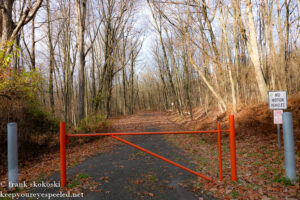
It was mostly sunny when I set out on my five mile hike under the now leafless trees along the trail. The trail was covered with the brown leaves that once provided shade and a lush green canopy over the path in the Summer.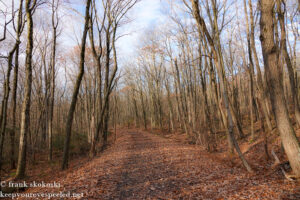
They are now decaying and recycling the nutrients the trees borrowed back into the soil. 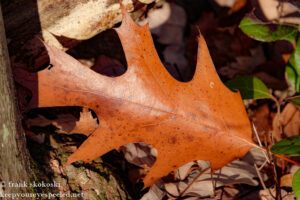
There were no wildflowers blooming along the trail. The last of them perished in the killing frosts we had the last few weeks. There were still a few leaves with some color, like the many blackberry brambles growing along the trail. 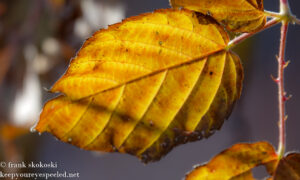
And some green leaves still clung to roundleaf green briar vines, but the vibrant colors of Spring, Summer and Fall are now gone. 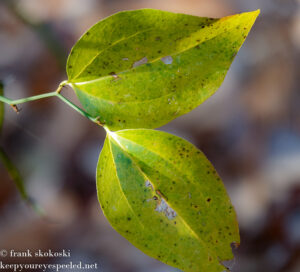
After walking in a westerly direction for about a 1/2 mile the trail took a sharp turn to the south. For most of it’s 5 mile length the Greater Hazleton Rails to Trails follows the path of the old Delaware, Susquehanna & Schuylkill Railroad (D S & S ) built by the Coxe Brothers Coal Company in 1892. However, this section of the trail crosses over an area of mine reclamation and some active mining and deviated from the old railroad right of way.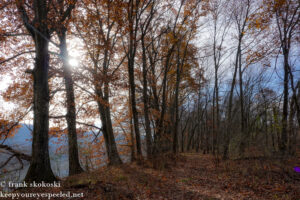
As I walked up into the flat mine reclamation area I noticed the high cloud formations that drifted into the otherwise clear skies. 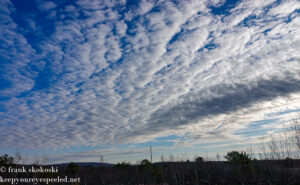
The young, and now leafless, birch, pine and locust trees made for some interesting backdrops for photos of the high clouds. 
The trail proceeded through the reclamation area and then again followed the old D, S & S railroad right of way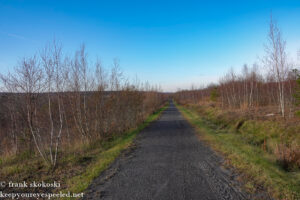
after crossing a new bridge over an active railroad track. 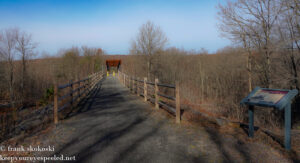
This active railroad was once the Lehigh Valley Railroad. This was the first railroad right of way that was built in the Hazleton area in the 1840’s. Many immigrants, including my great-grandparents and some of my grandparents traveled this route from Ellis Island when they arrived in this country to work in the anthracite coal mines.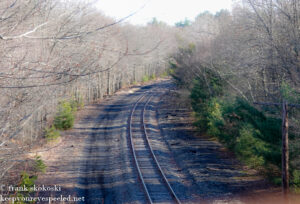
On the other side of the bridge were some the remains of the abandoned strip mines so common it the Greater Hazleton area. 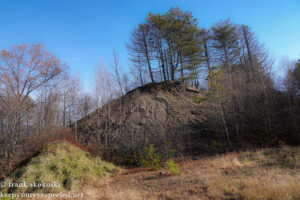
The November sun, although low in the sky, still warmed up the chilly morning air making for a pleasant hike. Along the trail an old abandoned strip mine filled with fresh spring water and created a scenic lake. A bench was placed here making this a nice place to rest along the trail. 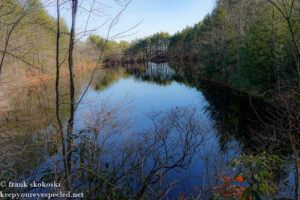
I didn’t rest here, but continued on and soon came to the rare and endangered pine and heath barrens along the trail. The barrens were first created by natural fires set by lightning. Native Americans would later set fires to continue the pine and heath barrens. . The barrens provided food for game animals hunted by the Native Americans. 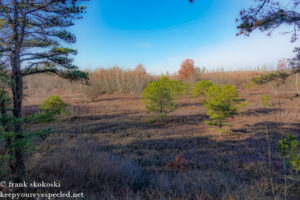
I walked about a 1/2 mile beyond the pine and heath barrens.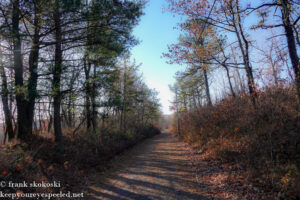
There was not much to see as far plants and wildflowers this time of year, some woodferns and
princess pine or rare clubmoss provided some bright green color along the trail, and 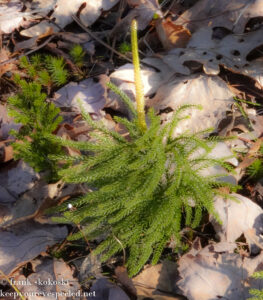
these teaberry leaves some red color to the otherwise brown and drab color of the leaves that littered the floor of the surrounding woodlands. 
On one of the many oak trees growing along the trail I saw these mushrooms still clinging to the tree trunk.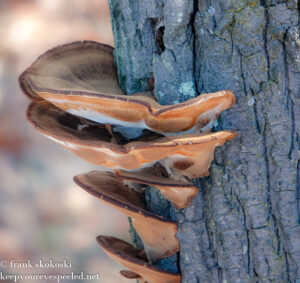
And atop another tree I spotted this abandoned wasp or hornet nest. It was located over the trail and 100’s of unsuspecting hikers and bikers passed under in the the warmer months. 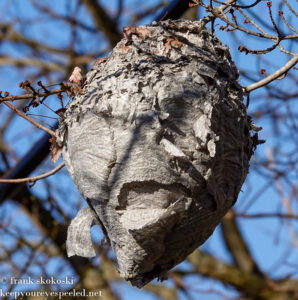
Up until this part of my hike I did not hear or see a single critter or bird. However, as I walked past the pine and heath barrens on my return I saw a flock of these Winter residents in our area, the dark eyed juncos, also know as the snow birds.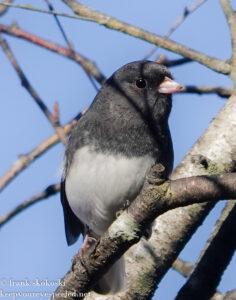
The birds breed in northern Canada and return to our area and destinations further south in the Winter. Like the black-capped chickadees they are not as shy of humans as other birds and are easy to photograph. 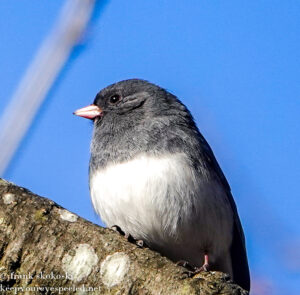
I continued my hike back under the now clear blue skies. Near the railroad bridge I saw this hairy woodpecker in one of the tree tops,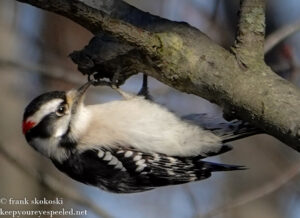
and nearby was this white- breasted nuthatch. Feeding on lichen growing on a tree trunk. 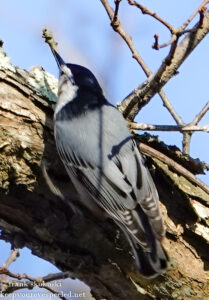
I crossed the new bridge over the railroad tracks and back into the mining reclamation area here, among the second growth, birch, pine. locust and black alder,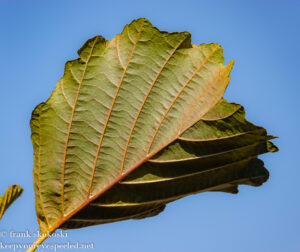
trees that have grown on the reclaimed land I saw a few black-capped chickadees, 
feeding on the pine cones, and catkins produced by these trees. 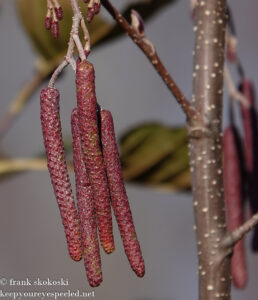
It was near here I saw a bear on my hike a few weeks ago.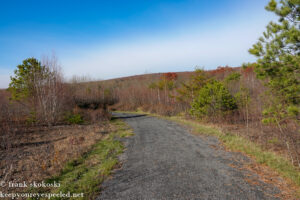
There was no bear today. The only other critter I saw as I finished my five mile hike was another white breasted nuthatch climbing down the trunk of a tree searching for food. 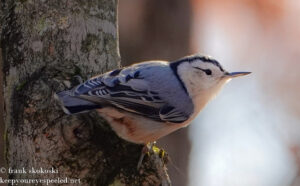 Well you can’t see a bear or a bald eagle on every hike, so I was very happy to have experienced another great hike on the wonderful Greater Hazleton Rails to Trails. It is a wonderful asset to our community and I encourage anyone living in, or visiting our area to check it out. Here is a link to a gallery with some more photographs from my hike. Greater Hazleton Rails to Trails hike. November 21 2021.
Well you can’t see a bear or a bald eagle on every hike, so I was very happy to have experienced another great hike on the wonderful Greater Hazleton Rails to Trails. It is a wonderful asset to our community and I encourage anyone living in, or visiting our area to check it out. Here is a link to a gallery with some more photographs from my hike. Greater Hazleton Rails to Trails hike. November 21 2021. 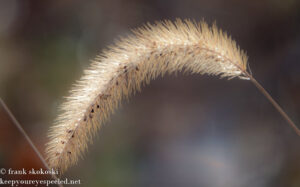
November comes
And November goes,
With the last red berries
And the first white snows.
With night coming early,
And dawn coming late,
And ice in the bucket
And frost by the gate.
The fires burn
And the kettles sing,
And earth sinks to rest
Until next spring.
Elizabeth Coatsworth
Tags
Categories
Recent Comments